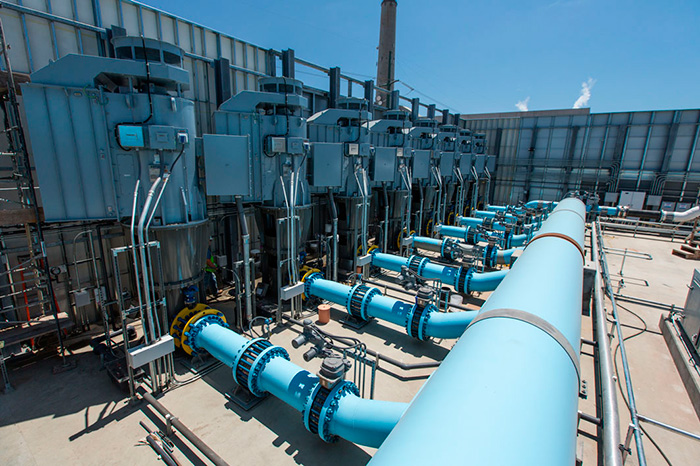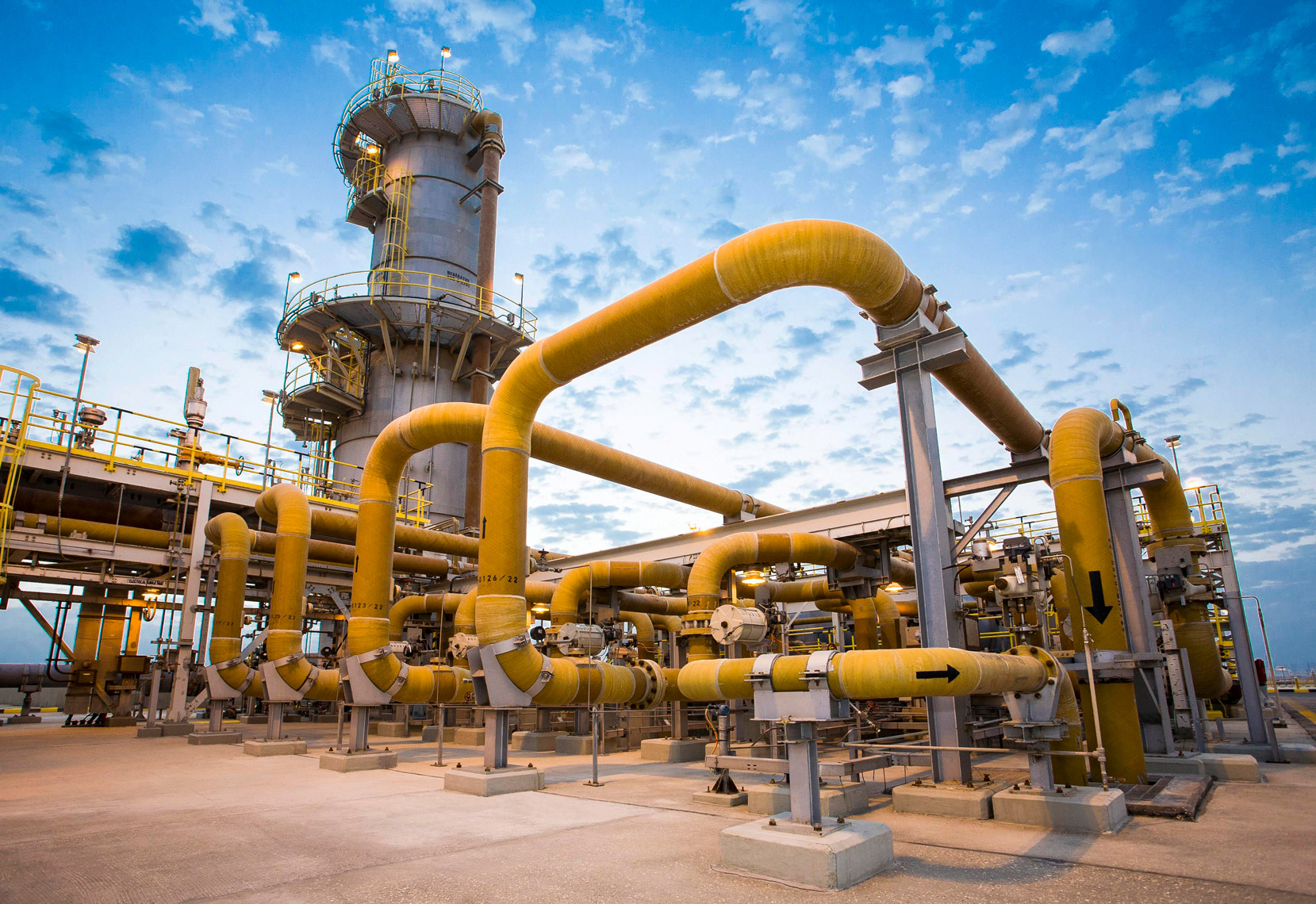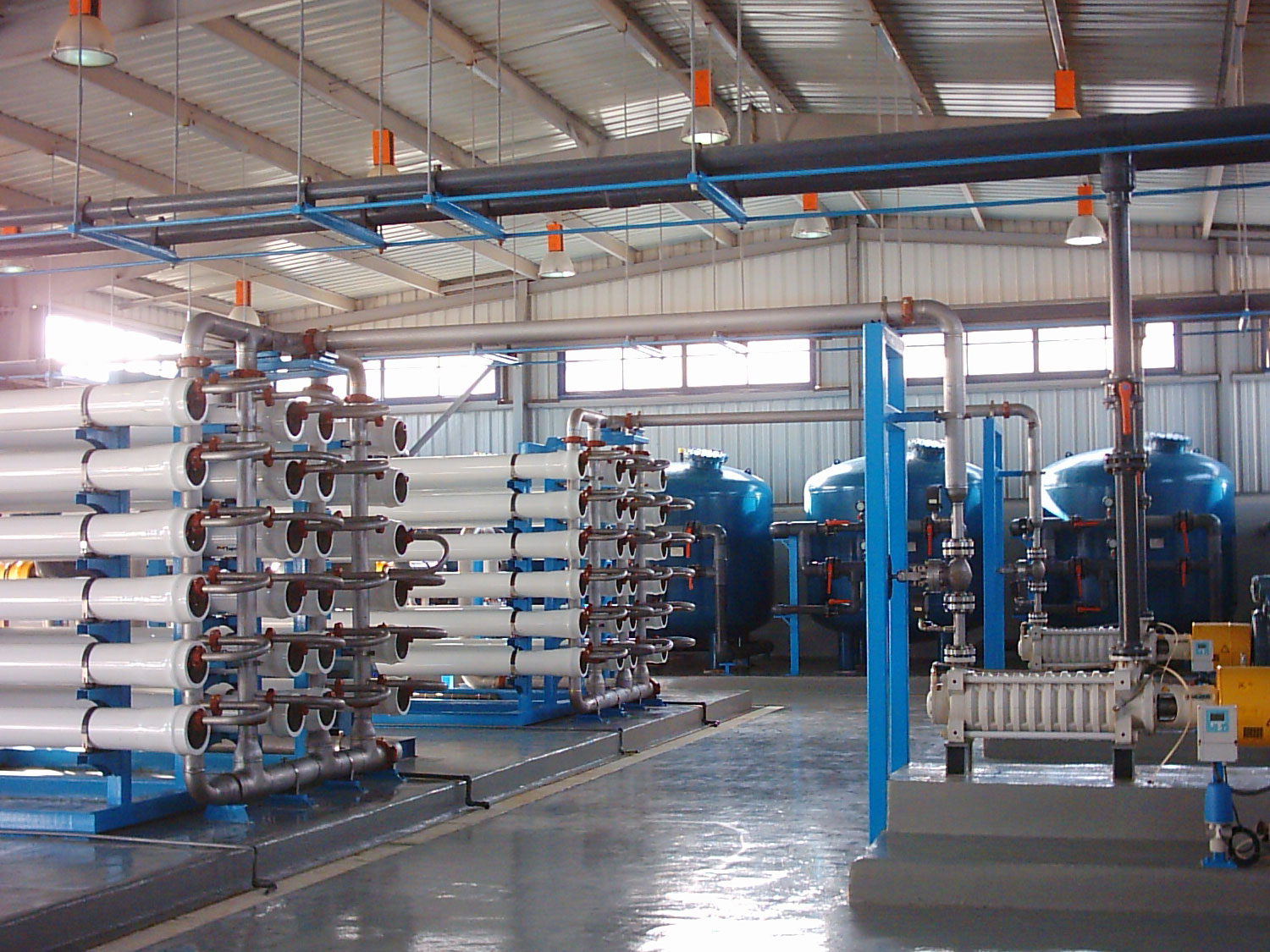What is a seawater treatment plant?
Seawater treatment plants are vital facilities in modern society. They use a series of complex processes to convert seawater into freshwater resources that can be used for human life and industrial production. This article takes an in-depth look at how sea water treatment plants work, their processes, and their importance in water resources management.
What is a seawater treatment plant?
1. Water inlet pump and raw water treatment
The first step in a seawater treatment plant is the transport of seawater from the ocean to the treatment plant by an inlet pump. Seawater contains a large amount of salt and impurities, so it needs to go through a series of pretreatment steps before entering the desalination system. These pretreatment steps include filtration, desalination and disinfection to ensure that the raw water quality meets the requirements of the desalination system.
2. SWRO system: one of the key technologies
SWRO system is the core technology in sea water treatment plants, namely seawater reverse osmosis system. In this step, seawater passes through a semi-permeable membrane, driven by high pressure, which separates water molecules from salts and other impurities. In this way, the salt content and other dissolved substances in seawater can be greatly reduced, thereby obtaining fresh water.
3. Monitoring and adjustment of desalination water quality
In seawater treatment plants, monitoring and regulating desalination water quality is a very important link. Through real-time monitoring and adjustment of desalinated water quality, it can be ensured that the quality of fresh water reaches hygienic and safe drinking water standards. This includes monitoring and regulating water quality indicators such as pH, dissolved oxygen, and salt content.
4. Fresh water storage and distribution
The treated fresh water will be stored in storage pools or tanks, waiting for subsequent distribution and utilization. As needed, fresh water can be piped into city water systems or put into containers such as bottled water for sale and distribution.

What are the pretreatment processes in sea water treatment plants?
1. Water inlet pump delivery
Sea water treatment plants first transport seawater from the ocean to the treatment plant through feed pumps. This step ensures that seawater can continue to flow into the treatment system, providing a raw water source for subsequent treatment processes.
2. Dissolved gas removal
Seawater often contains large amounts of dissolved gases, such as oxygen, carbon dioxide, etc. Dissolved gases can be removed from seawater through processes such as air flotation or air bubbling, reducing the impact on subsequent treatment equipment.
3. Removal of suspended solids
Seawater often contains suspended solids, sediment and other impurities, which will affect the subsequent operation of the reverse osmosis membrane. Therefore, seawater treatment plants usually use sedimentation, filtration and other methods to remove suspended solids.

How to achieve efficient energy utilization in seawater treatment plants?
1. Application of energy recovery technology
Seawater treatment plants usually use energy recovery technologies, such as pressure energy recovery devices, solar photovoltaic panels, etc., to recycle waste heat, waste water and other energy generated during the treatment process, thereby reducing energy consumption.
2. Application of intelligent control system
The sea water treatment plant will also be equipped with an intelligent control system to achieve efficient energy utilization and reduce operating costs by monitoring and optimizing the treatment process.
3. Introduction of new materials and technologies
With the continuous advancement of science and technology, new materials and technologies continue to emerge, such as high-efficiency reverse osmosis membrane materials, advanced energy conversion devices, etc., providing more possibilities for energy utilization in seawater treatment plants.
Application of reverse osmosis technology in seawater treatment
Reverse osmosis technology is one of the most commonly used technologies in sea water treatment plants and plays an important role in the process of converting seawater into fresh water. The application principles and advantages of reverse osmosis technology in seawater treatment will be introduced in detail below.
1. Selection and performance of reverse osmosis membrane
Reverse osmosis membrane is the core component of reverse osmosis technology, and its selection and performance directly affect the efficiency and quality of seawater treatment. A suitable reverse osmosis membrane should have good water permeability and be able to effectively intercept salt and other impurities to ensure that the quality of fresh water meets the requirements.
2. Function and energy consumption of high-pressure pump
In the reverse osmosis process, a high-pressure pump plays a key role by providing sufficient pressure to push seawater through the reverse osmosis membrane. However, high-pressure pumps are also one of the equipment with high energy consumption. How to reduce their energy consumption and improve energy utilization efficiency has become one of the problems that sea water treatment plants need to solve.
3. Maintenance and management of RO system
The normal operation of the reverse osmosis system requires regular maintenance and management, including cleaning, replacement and disinfection of the reverse osmosis membrane. Good maintenance and management can extend the service life of the reverse osmosis system, reduce operating costs, and ensure stable water quality.
4. Development Trend of Reverse Osmosis Technology
With the continuous development and advancement of science and technology, reverse osmosis technology is also constantly innovating and improving. In the future, with the application of new materials, new processes and new technologies, reverse osmosis technology will be more efficient, energy-saving and environmentally friendly, providing better solutions for seawater treatment plants.

Environmental challenges facing seawater treatment plants
While seawater treatment plants provide freshwater resources for humans, they also face some environmental challenges and problems. The environmental challenges faced by seawater treatment plants and their responses are described in detail below.
1. Energy consumption and carbon emissions
The operation of seawater treatment plants requires a large amount of energy support, especially in the energy-intensive reverse osmosis process. Energy consumption not only increases operating costs, but may also result in large amounts of carbon emissions, exacerbating global climate change. Therefore, reducing energy consumption and carbon emissions has become an important environmental issue that sea water treatment plants need to solve.
2. Wastewater treatment and discharge
Sea water treatment plants will produce a large amount of wastewater and brine by-products during the treatment of seawater. How to carry out effective wastewater treatment and brine disposal has become an urgent problem to be solved. Reasonable wastewater treatment solutions can reduce pollution to the marine environment and protect the health of the marine ecosystem.
3. Biodiversity protection
The construction and operation of seawater treatment plants may have certain impacts on the surrounding ecological environment and biodiversity, especially on the marine ecosystem. Therefore, effective protection measures need to be taken to reduce damage to biodiversity and protect the integrity and stability of marine ecosystems.
4. Social impact and sustainable development
The construction and operation of sea water treatment plants may have certain social impacts on surrounding communities and residents, including impacts on the local economy, society and culture. Therefore, it is necessary to formulate reasonable social responsibility policies to promote the sustainable development of seawater treatment plants and achieve coordinated development of economy, society and environment.




